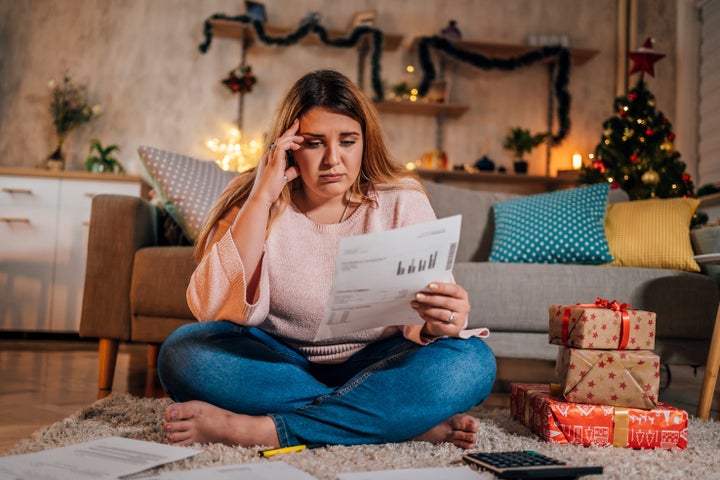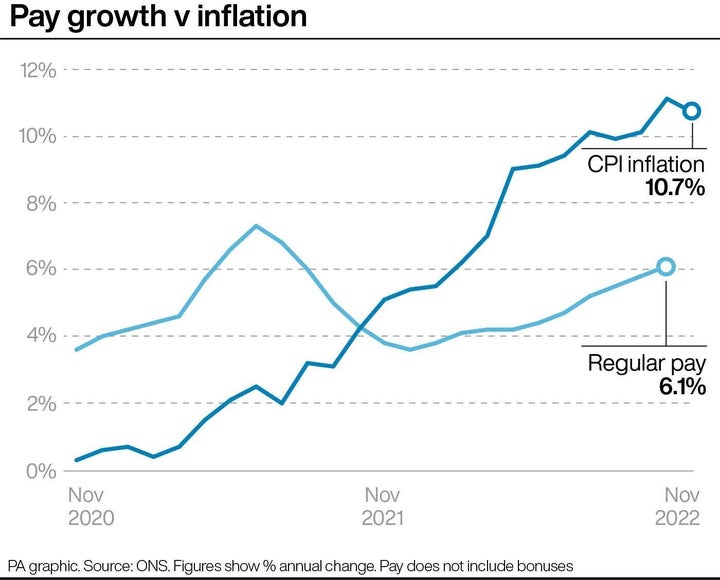
New figures show inflation fell to 10.7% in November, from a high of 11.1% back in October.
As the UK is widely believed to be at the start of a long recession – which may not clear until early 2024 – any sign that inflation rates have peaked from the Office for National Statistics (ONS) is obviously good news.
But, there are a few key things to remember.
What inflation actually means
Inflation is the term used to compare how much products cost each month with the same time previous year.
A fall in the inflation rate does not mean items will become cheaper. It simply means prices are still going up, just not quite as quickly as in October.
Inflation is still at a very high level
Inflation is still high at a 40-year-high at 10.7%.
Pre-pandemic, inflation rates were closer to the Bank of England’s target inflation rate of 2%.
Covid lockdowns saw it drop below that, only for the invasion of Ukraine to make it soar earlier this year to double-digits because the war limited Europe’s energy supply.
Wages don’t match costs

The ONS released stats on Tuesday that revealed regular pay fell in real terms by 2.7% between August and September.
This is a slightly smaller drop than the the 3% decrease between April and June, but remains one of the largest ever declines in value since the records began back in 2001.
As prices are increasing at a faster rate than pay, salaries do not stretch as far – triggering a growing gap between income and outgoings, exacerbating the current cost of living crisis.
This is despite growth in average total pay being at 6.1% (including bonuses).
BBC Breakfast’s Nina Warhurst explained: ”For most people their wages are not keeping pace with how much things are costing.”
This is the primary factor driving public sector workers to strike throughout December as they call for their pay to increase in line with inflation.
What products are driving inflation?
Tobacco, accommodation services, clothing and footwear, games, toys and hobbies all fell in price.
But the “upward effect”, as ONS dubbed it, has stemmed from the rise in alcohol prices in restaurants, cafes and pubs, as well as food.
In October, food and non-alcoholic beverages were at 16.4% inflation. By November, this had risen to 16.5%.
Meanwhile, alcohol and tobacco were at 6.2% in October, but dropped to 4.2% the following month, influencing the overall inflation rate for all products.
What next?
Warhurst explained that the Bank of England may look at raising interest rates again. This would make the cost of borrowing more expensive, so that the public save more and spend less, which should bring inflation down.
The current rate set by the Bank is already at 3% – the next rate will be on announced on Thursday, December 15.
But, as Warhurst noted, getting back to target the 2% inflation rates will be a long journey, adding: “That gap between what’s coming in and what you’re paying out is not going to close any time soon.”
Chancellor Jeremy Hunt has vowed to halve inflation next year.
After official data revealed the economy grew by 0.5% in the month to October – but dropped 0.3% overall in the quarter – he warned: “Any action that risks embedding high prices into our economy will only prolong the pain for everyone, and stunt any prospect of long-term economic growth.”
Economists believe that price rises will continue to slow over the coming months and throughout 2023.
Petrol prices have come down as oil prices have fallen due to demand concerns amid a global economic slowdown, with other commodity prices also on the descent.
